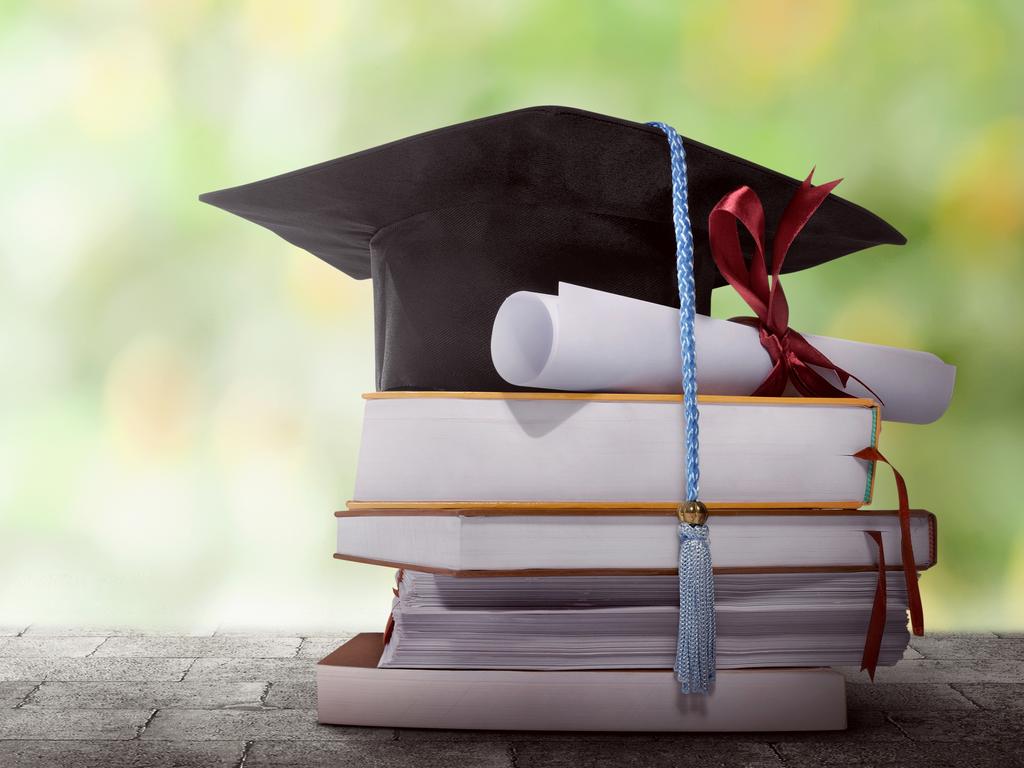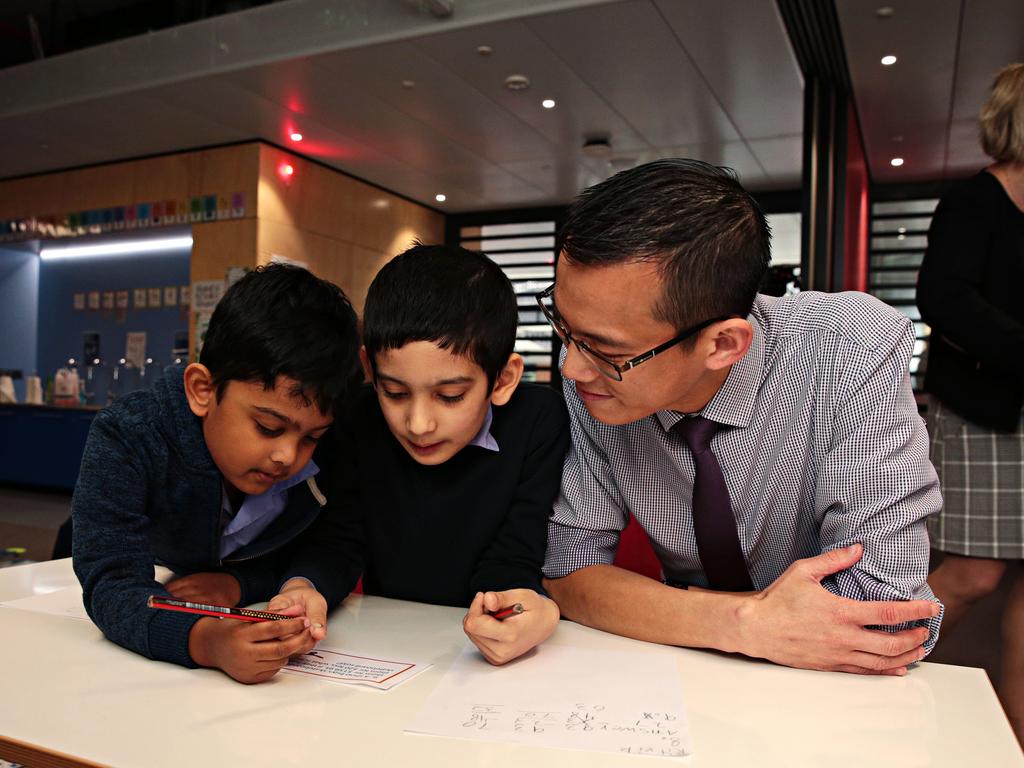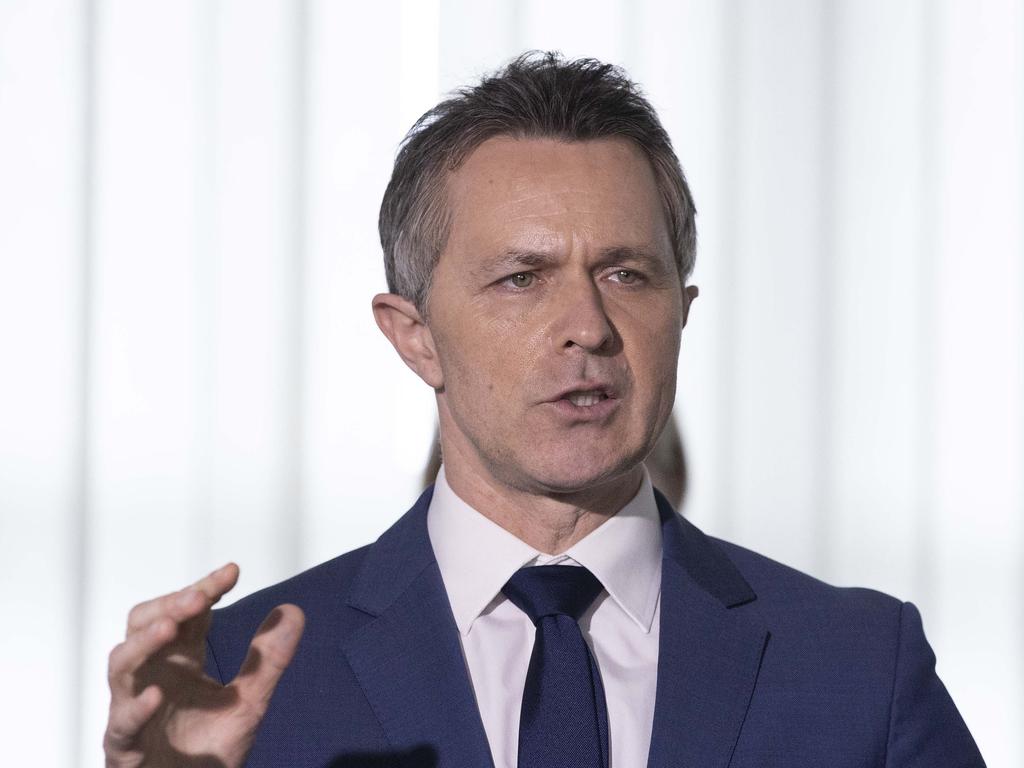Four reforms could close the education inequality gap
Australia is on track to hit a grim milestone: a million schoolkids with an education too poor to enable them to participate productively in society. The good news is it can be averted.

When Australia’s 15-year-olds began sitting the international PISA tests of reading literacy, in 2000 and 2003, about 12 per cent were shown to have reading levels that OECD experts consider “too low to enable them to participate effectively and productively in life”.
By 2018, that figure had become one student in five. By the end of this decade, it is on course to be nearly one in four. Translated across the school system, that means a million students, out of just over four million, who cannot read well enough to have a productive career and a full life. Similar results exist for scientific literacy. In maths, the results are even more bleak. Inequality in Australian education just keeps getting worse.
Of the 76 countries that took part in the latest PISA tests in 2018, Australia had the eighth-largest gap in performance between the top and bottom 10 per cent of students. We are on track to achieve a grim milestone: a million schoolchildren with an education too poor to enable them to participate effectively and productively in Australian society.
We cannot blame the problem on broader societal trends. When our children start school this level of inequality doesn’t exist. Grattan Institute analysis shows that at year 3 there is a gap of 10 months in NAPLAN results between students whose parents have high education compared to low education. By year 9 that gap has multiplied to 2½ years.
Blaming this problem on teachers is completely misplaced. The growing gap between high and low performers is baked into the design of the modern Australian school system. Teachers cannot easily identify gaps in students’ knowledge as a prelude to closing them, because the system is no longer clear on what it means for a student to be at grade level – what specific things they need to know in any given year.
Worse, the system actively encourages teachers to meet students at their level. Teachers, who often went into education to fight disadvantage, are told the best way to do that is by giving struggling students different material or teach different subjects to everyone else. The research is clear that this is the wrong thing to do; it just increases inequality.
The good news is that policies and approaches that are increasing inequality can be stopped. The new federal Education Minister, Jason Clare, must work with all education leaders to introduce evidence-based reforms that have been shown to work for disadvantaged students elsewhere, but that Australia has neglected for too far long. Our own history points the way.
As recently as the 1990s, education system leaders believed there was a moral imperative to provide students from poorer families the same education as wealthier students. Teaching all students the knowledge and skills that enable any person to navigate a complex society was the only way to ensure all got a chance to succeed in it.
This dominant narrative rejected the history of secondary education, especially the senior years, as largely the privilege of the elite. And it produced tremendous improvements in equity.
In 1968, only about a quarter of students who started high school completed year 12. By 1992 that figure was close to 80 per cent. The figure is now 83 per cent, reflecting little improvement in the past 30 years.
Slowly and insidiously, the narrative of a common education producing a more level playing field of life chances has changed. We no longer talk about equality, we talk about adapting education to every child’s needs.
From government departments to key stakeholders to education faculties in universities around the country, teachers are exhorted to offer “individualised instruction”, “targeted teaching”, to “meet learners where they are ‘at’ ”.
While this approach sounds at first like an argument for equity, the evidence is clear that it leads to disadvantaged students being taught at a lower level than other students. In other words, every time we move away from the same knowledge and skills taught at the same level for all students, we increase inequality.
The problem of teaching to students’ perceived needs is highlighted in The Opportunity Myth, an influential 2018 report produced by TNTP, a US organisation dedicated to ensuring poor and minority students get equal access to effective education.
The report compared the education offered to poor African-American students with their wealthier, predominantly white counterparts. It showed that all students shared similar aspirations – 94 per cent of students wanted to go to college, for example.
But teachers, in efforts to teach to the “needs” of disadvantaged students, continually dropped content standards, provided lower-quality and less complex books to read, and asked students to complete lower-level tasks. They also assessed poorer students differently, so even though a student in a disadvantaged school might get a B average, that mark didn’t prepare them for life after school because a B in that school was a D or worse in other schools.

This is not just an American trend. Research from around the world shows teachers – through no fault of their own – tend to drop standards for students from disadvantaged and minority backgrounds. The result is that a disadvantaged student may never in all their years of schooling get the opportunity to learn or to demonstrate grade-level material.
We know students from disadvantaged backgrounds start school with less background knowledge, smaller vocabularies, and far fewer book-lined walls in their homes than other students.
Therefore, if we “meet students where they are at”, we are effectively saying we will never give the disadvantaged ones the opportunity to catch up to their more advantaged peers.
The evidence shows that when students who are behind are taught clearly identified and sequenced knowledge appropriate to their grade level, using high-quality instructional materials, they can accelerate their learning and make up huge ground.
But there’s a catch. First, research from the Johns Hopkins University shows this can only occur when there is a high-quality curriculum that clearly defines what knowledge is to be taught in each subject and at each level. Central to this research is the understanding that skills are developed not in a vacuum but in the context of specific knowledge and understanding.
Second, effective instructional materials based on a high-quality curriculum need to be implemented in classrooms. Research from the Brookings Institution has shown that placing high-quality instructional materials in classrooms can have a greater impact on student learning than any initiative focused solely on improving teacher quality has ever managed to produce.
The Australian curriculum, however, is not a high-quality, knowledge-rich curriculum. It doesn’t guarantee the knowledge students are supposed to learn. It fails to provide teachers with comprehensive, high-quality instructional materials to be used in classrooms.
Instead, it is a skills-based curriculum; the standards for students to achieve are skills-based. A skills-based curriculum includes knowledge but isn’t specific about what knowledge should be taught, so there is no guarantee of what will be taught in each year level, let alone across the curriculum.

For example, in year 8 history, teachers are supposed to teach “the transformation of the ancient world to the early modern world, from the decline of the Roman empire in western Europe through Medieval, Renaissance or pre-modern Europe”. It is incredible to think through the myriad ways this 1200-plus-year period of history could be interpreted and transformed in the classroom. The curriculum also states that students studying history need to be able to “compare sources to explain the accuracy, usefulness and reliability of sources as evidence”. No important primary and secondary sources, from any period, are specified as important for students to learn.
Teachers regularly say they are not clear on what to teach and what the standards are at each grade level. Yet both are essential to improving equity.
Teachers we speak to through our work at Learning First tell us the standards in the Australian curriculum in science, for example, are so broad you could cover them in a day. In Grade 3 Biological Sciences, for instance, students are required to “compare characteristics of living and non-living things and examine the differences between the life cycles of plants and animals”. Depending on the level of depth they wanted to cover and their scientific expertise, a teacher could spend a lesson, or a year, on this content.
By not being clear about what specific knowledge should be taught – which characteristics, which living and non-living things, which features of life cycles to compare and between which sorts of plants and animals – the Australian curriculum allows enormous variation in what is taught in classrooms. The obvious result is great variation and therefore inequality in what is taught and what students learn in classrooms.
Knowledge begets knowledge. The more knowledge a child has about a topic, the more she will be able to understand what she reads, problem-solve and think critically, remember new information, and gain new knowledge and understanding. Deep content knowledge underpins all educational skills we value, including reading comprehension, critical thinking, and problem solving. Across all disciplines, from reading and history to maths and science, these are well-established findings in the research about how humans learn.
Beyond the academic research, evidence from many education systems shows that when a system shifts from a knowledge-based to a skills-based curriculum, overall performance and equity both suffer. In the 1990s, France jettisoned its highly prescriptive, knowledge-based curriculum in favour of a skills-based curriculum. Twenty years later, reading results of primary school students showed a stark decline in overall performance, with the steepest decline among students from the least-educated backgrounds.
The performance of Finland, once lauded for producing world-leading results in student tests coupled with high equity, has experienced three decades of overall decline and increasing inequality. Research identifies the fall as due to a shift from the provision of high-quality curriculum and instructional resources to a focus on greater autonomy, and therefore variation, in what can be taught to students at different schools.
Conversely, a new, granular national curriculum, with clear detail on the knowledge that students have the right to learn in each subject, has enabled Estonia to steadily improve its performance on international tests. Louisiana, one of the poorest, least-educated states in America, has shown impressive gains in students’ reading levels after introducing a high-quality knowledge-rich curriculum and instructional materials.
But our country is heading in the other direction. The Australian curriculum largely leaves decisions about what knowledge to teach to schools and teachers. This means the Australian curriculum doesn’t provide equality in what is taught in Australian schools. This hurts disadvantaged students more than anyone else as students from wealthier families will always have access to far more knowledge and cultural capital than disadvantaged students.
Moreover, the number of subjects offered in Australian secondary schools has grown enormously in recent years. These new subjects may have been added out of good intentions, but their introduction has also increased inequality.
Many schools in disadvantaged areas now don’t offer the subjects that are considered essential in wealthier schools and in the broader community. The Centre for Sustainable Communities has shown that advanced subjects, including physics and specialist mathematics, are much more likely to be offered in socio-economically privileged schools than in disadvantaged schools. The latter group is instead more likely to offer subjects that are supposed to better meet the “needs and interests” of its students, but that in reality deny them the education wealthier students enjoy by birthright.
To turn current Australian practice on its head requires leadership at every level, starting with Clare. Four reforms would anchor a new approach to fighting inequality.
FIRST, restore a narrative of moral purpose, embodied in the careers of so many serving teachers and school leaders, that places equality above autonomy and flexibility. This means being clear on every student having the right to learn the necessary knowledge and skills to participate effectively and productively in life. And that this right should no longer be diminished because we perceive the “needs” of disadvantaged students to be different from wealthy students.
SECOND, make it clear what knowledge and skills students have the right to learn in order to participate productively in life. Be honest and acknowledge that the Australian curriculum does not offer this clarity.
THIRD, monitor what is actually taught to Australian students. Understand the inequalities embedded in what is taught to students in schools in poor communities compared to those in wealthy ones. It is a sign of how lost we have become that we have little idea of what is actually taught to students in disadvantaged communities.
FINALLY, help teachers and school leaders to provide the education that equips all students with the knowledge and skills they need. That means high-quality support and instructional materials. High-performing, high-equity systems around the world offer them. Australia does not.
During the recent election much was made of Anthony Albanese’s background. It is easy to be cynical about personal narratives in politics, but we should be proud to live in a country where a kid that grew up in housing commission flats can become prime minister.
Change to our education system is possible, if we have the will. Without it, Albanese’s story is unlikely ever to be repeated.
Dr Ben Jensen is CEO and Mailie Ross is director of Learning First.







To join the conversation, please log in. Don't have an account? Register
Join the conversation, you are commenting as Logout